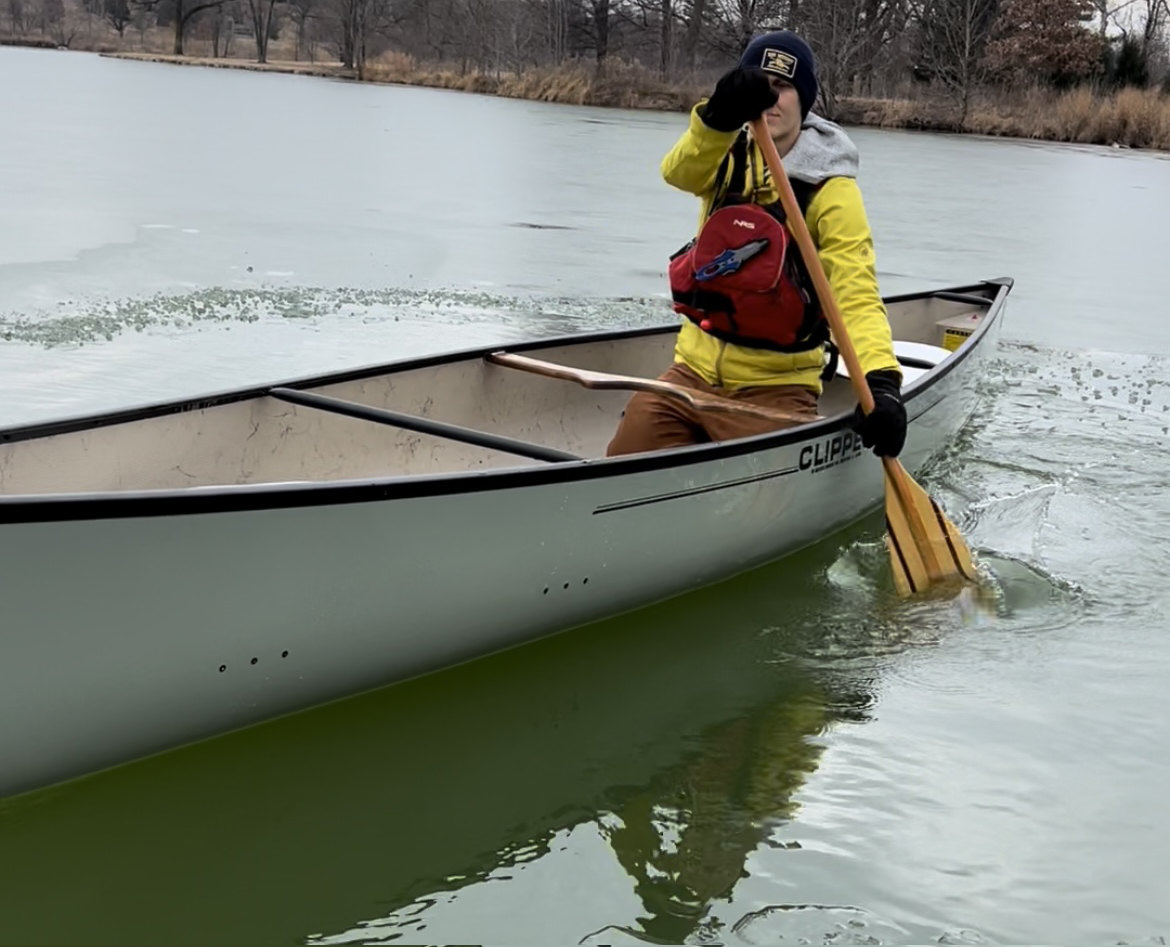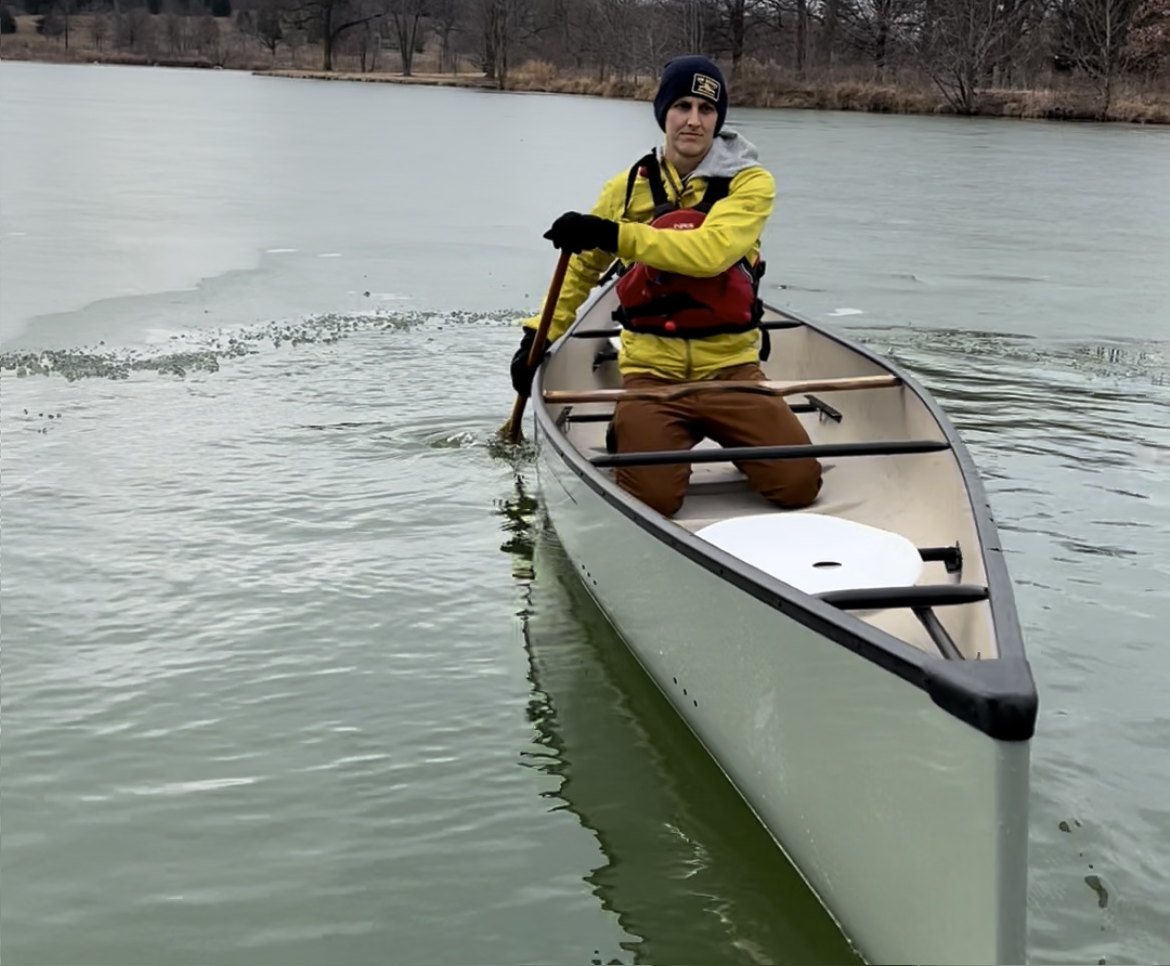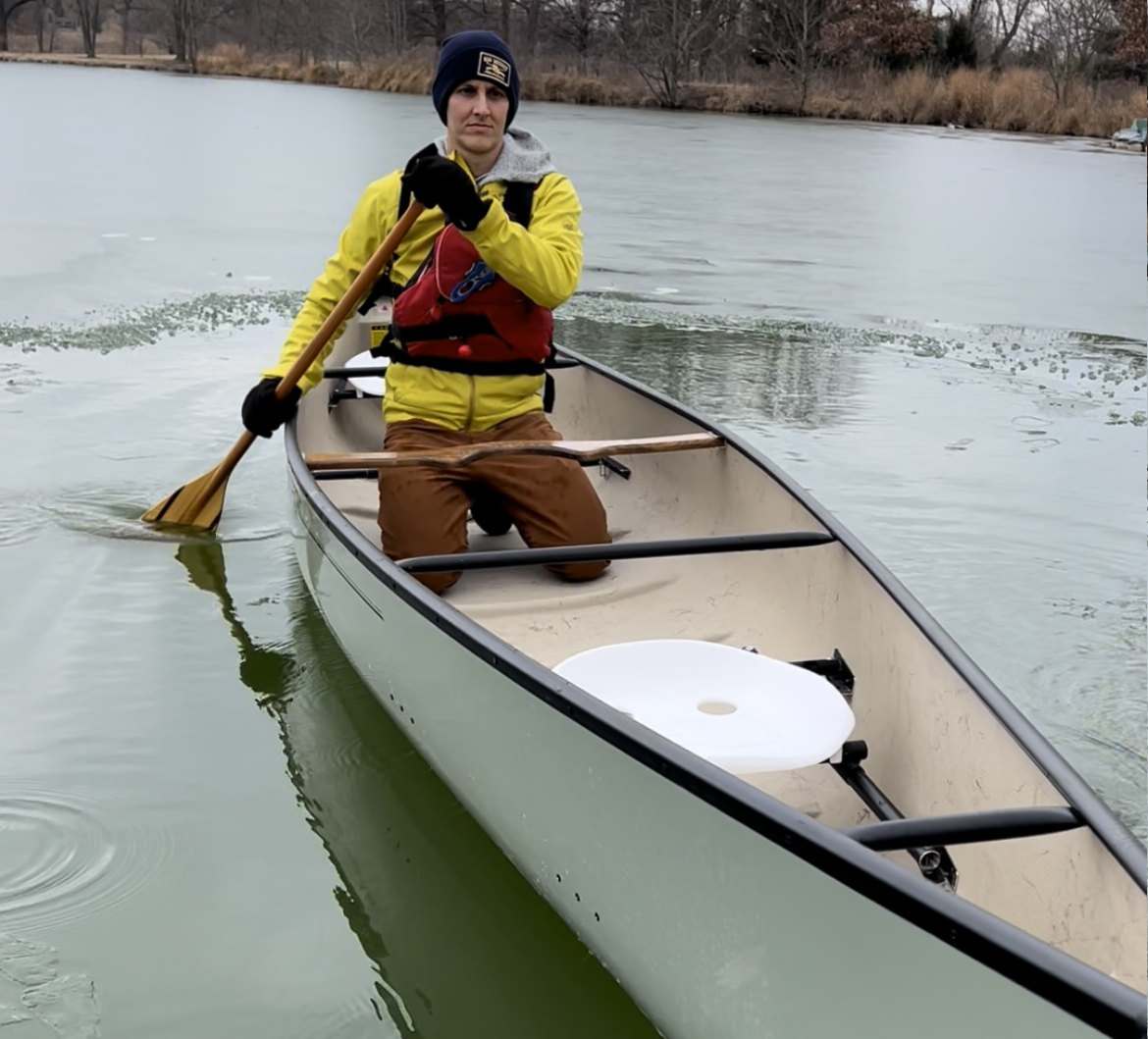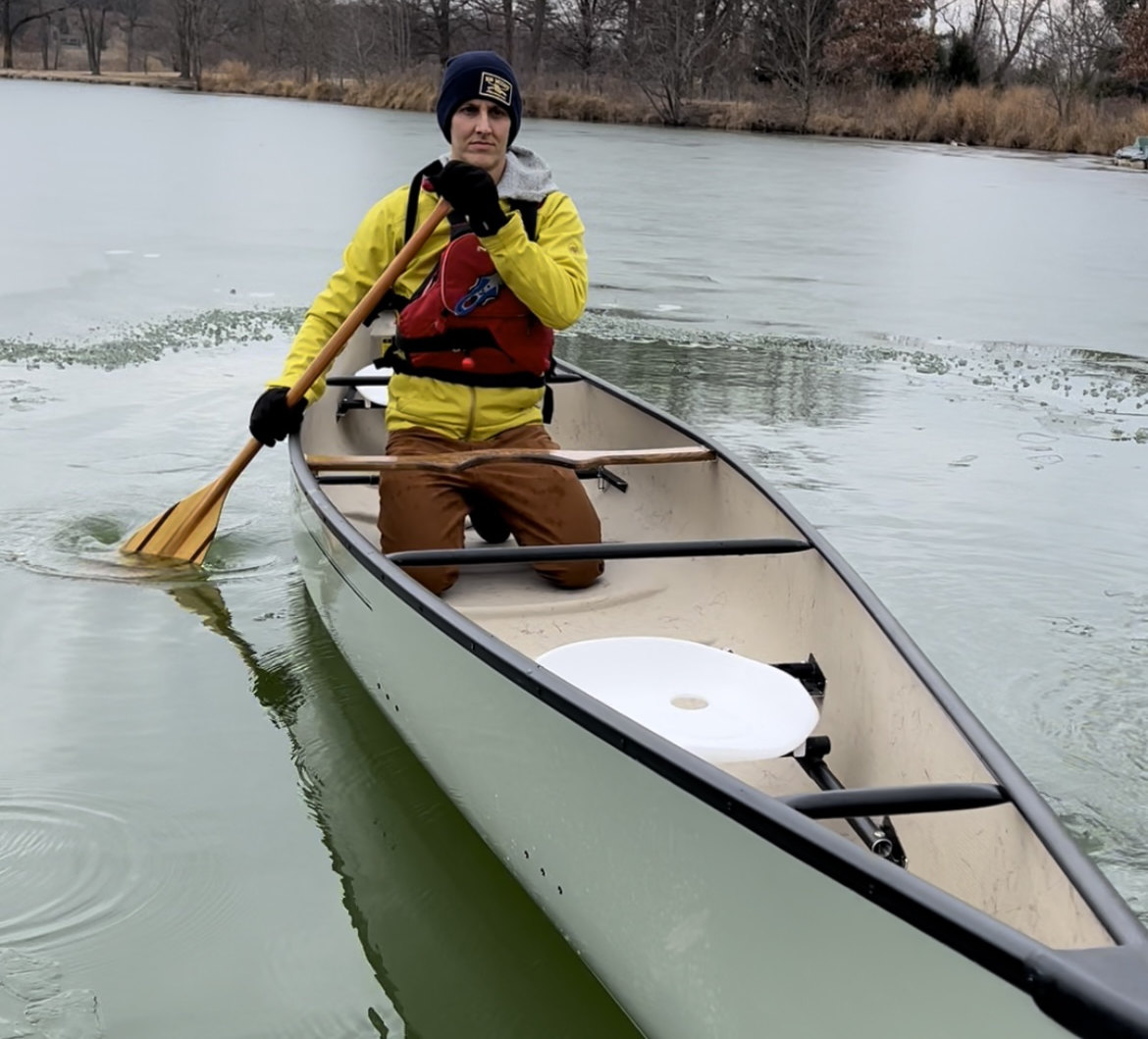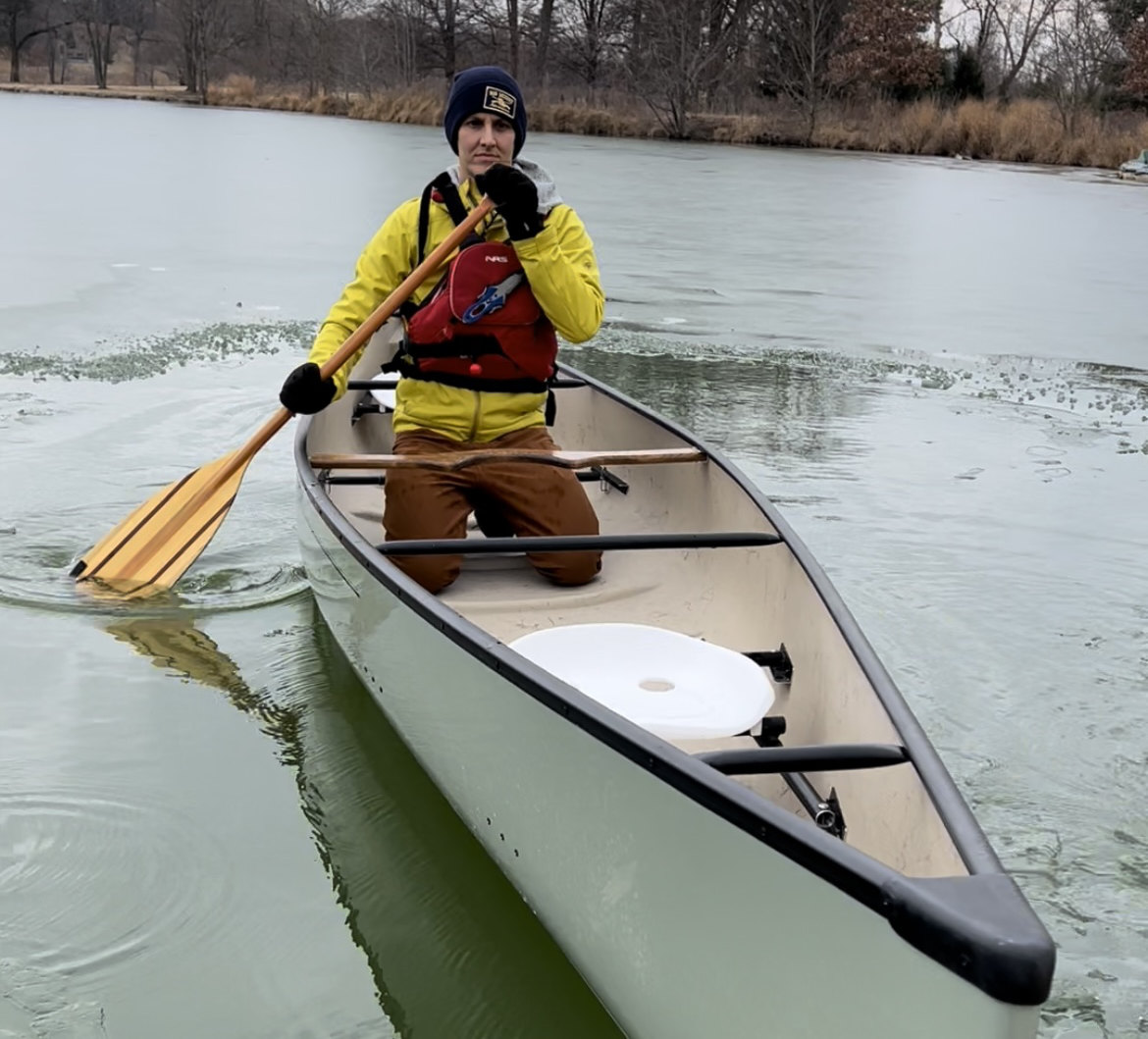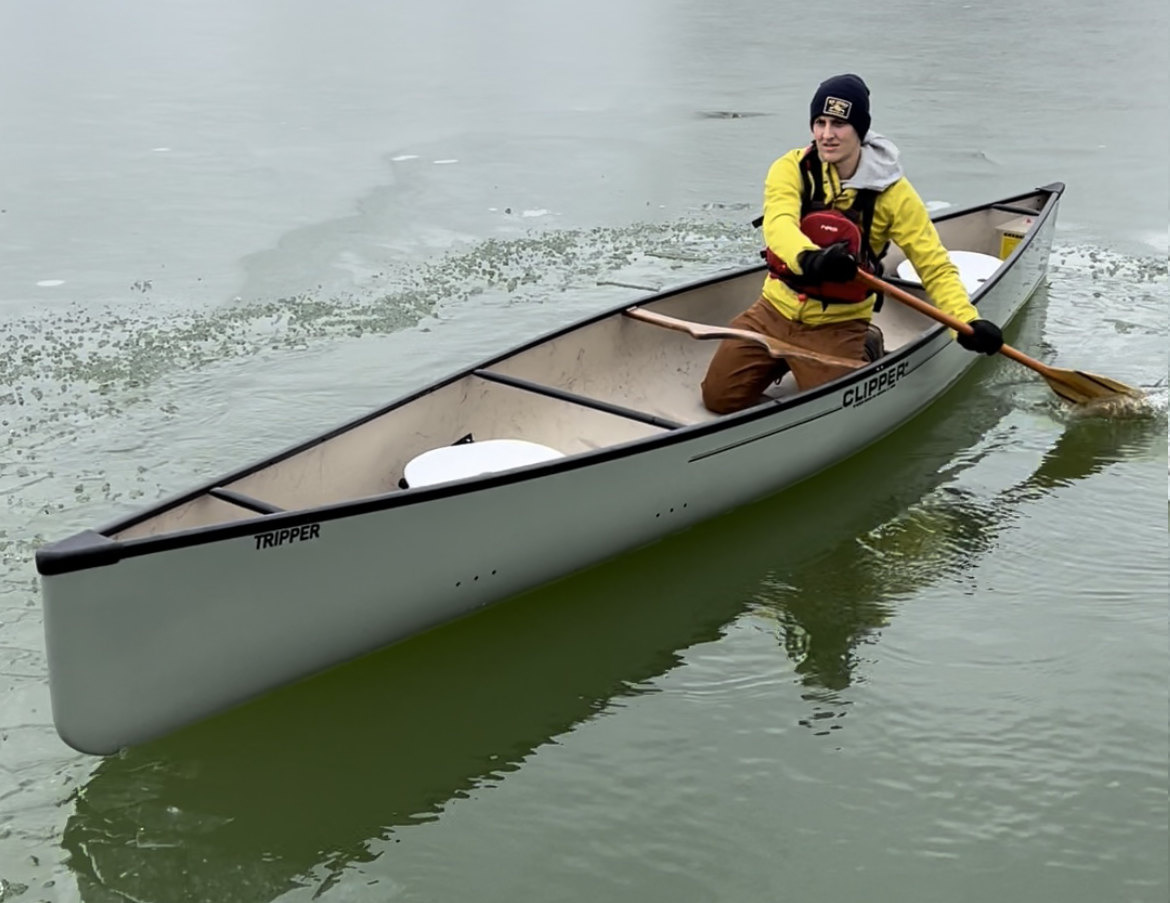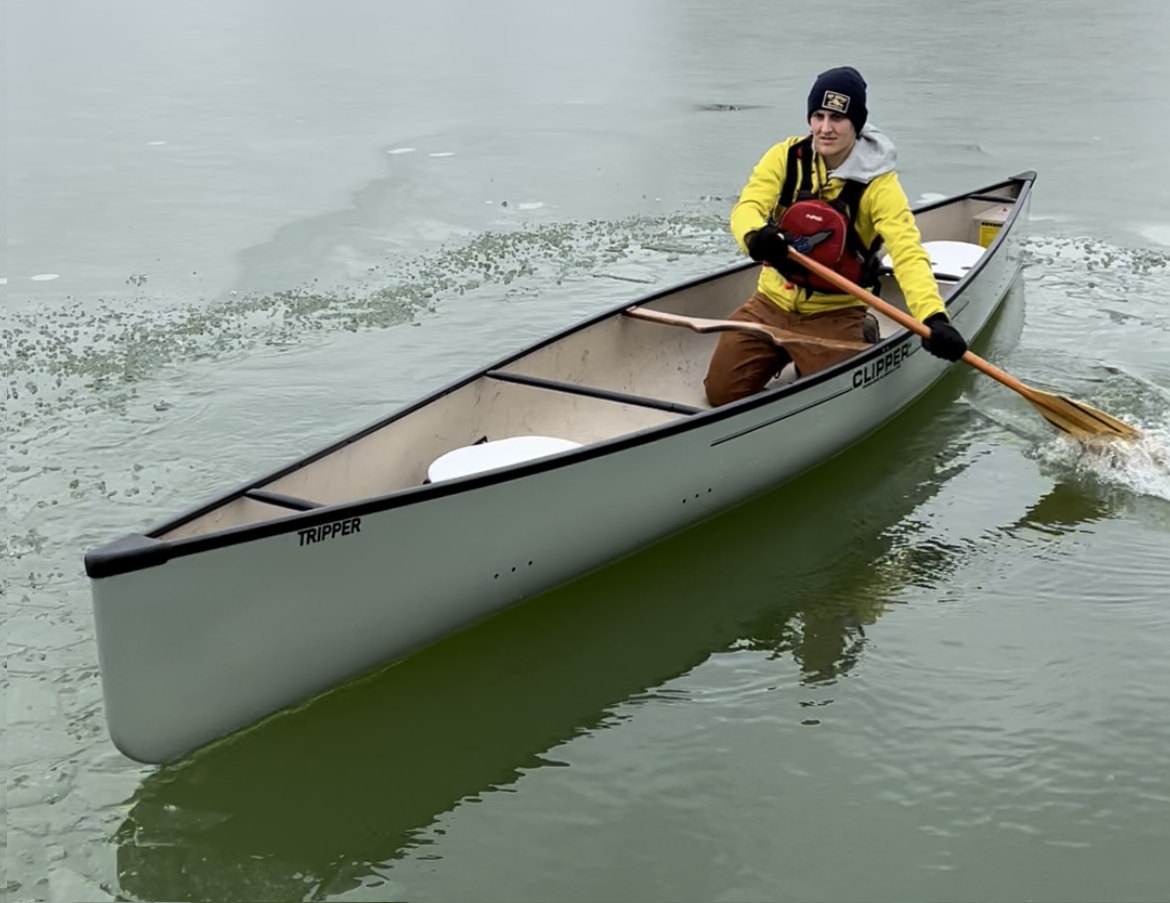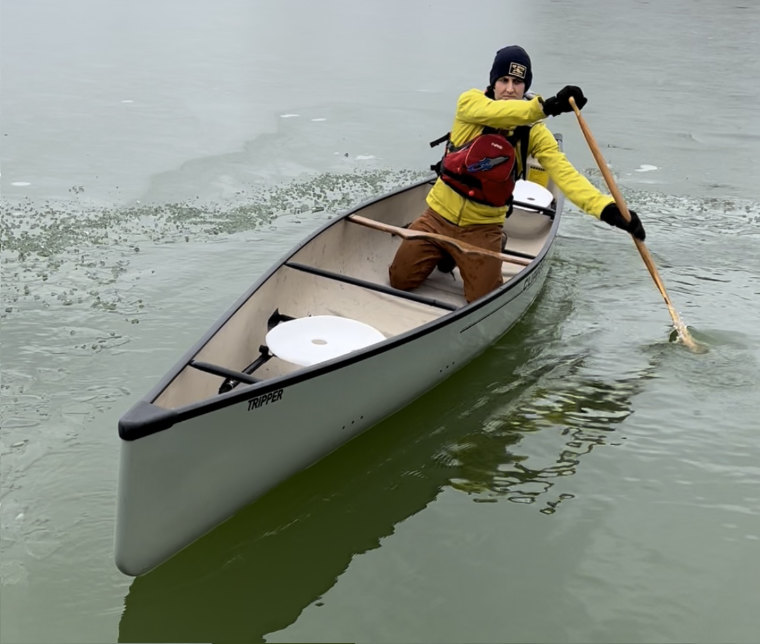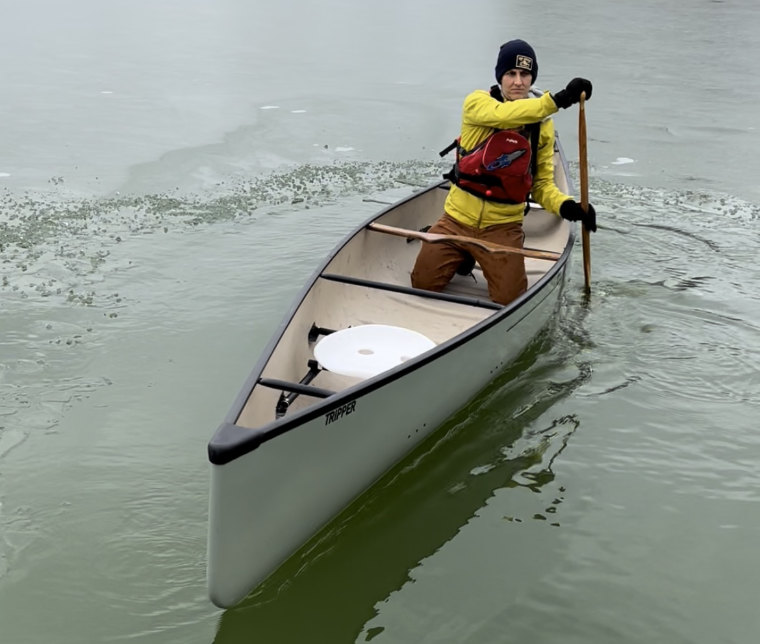Whether you’re interested in paddling the majestic lakes of the Boundary Waters, adventuring on the Mighty Mississippi, or just dipping your paddle in waters close to home, learning how to canoe is a fantastic way to experience a variety of outdoor settings. This article is a guide to learn how to canoe for beginners. Whether it’s your first time canoeing, or you are looking to expand on the canoe basics you’ve already learned, we’ll offer canoe paddling techniques that will get you going on the water in no time!
- Equipment for canoeing
- A few basics of canoeing for beginners
- How to paddle a canoe solo: canoe paddle strokes
- How to paddle a canoe in tandem: canoe paddle strokes
- Capsize prevention
Equipment for canoeing
Before you’re ready to hit the water, there are several pieces of equipment that you’ll need to either purchase, borrow or rent.
Besides the standard items you bring on every outdoor trip like sun protection, water bottles, appropriate clothing and first aid essentials, here’s a checklist of canoe specific gear to get you started:
Canoe
First things first, you need a boat. There are many different types of canoes. The style of boat you should purchase depends on the type of water you plan to paddle and whether you’re interested in solo canoeing or tandem canoeing. If you’re interested in paddling alone, a solo canoe like the Clipper Canoes Caribou S is a great option. If you prefer to learn how to tandem canoe, the Clipper Canoes Ranger is a great entry level canoe at a reasonable price point.
If you’re not ready to buy a canoe, there’s always the option to rent or borrow a boat. Call around to outfitters near the waterway you’re looking to paddle for more information. Renting from an outfitter has the added bonus of providing shuttle services if you’re on a river.
How to sit in a canoe
- Sit upright, keeping your back relaxed and straight.
- Sit in the middle of the seat so your weight is distributed evenly.
- For added stability, kneel off the edge of your seat.
Sitting too far or leaning towards one side. Weight distribution is key with canoeing so always keep your body weight centered.
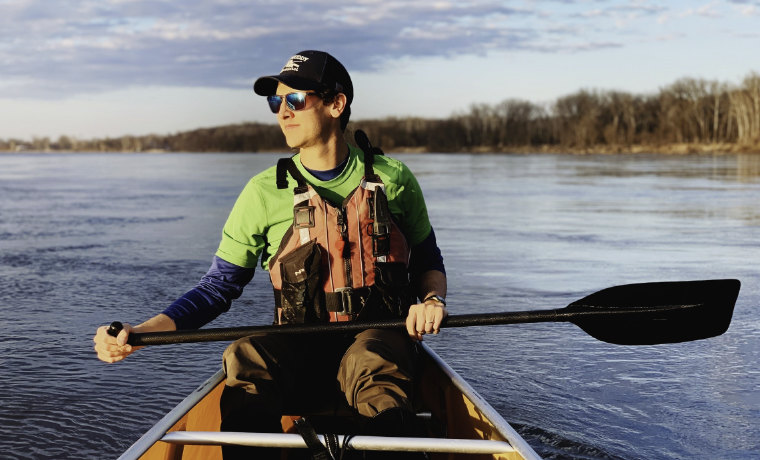
[Photo by Natalie Rolwes ]
Paddle
Next up it’s time to choose the right paddle.
Canoe paddles come in several lengths, straight or bent shaft, and with various grip and blade shapes. It would be overkill to go too deep into the specifics in this canoe tutorial for beginners. As you get started, just choose something that is comfortable to hold and appropriate for your torso length. Pro tip: always bring a spare in case one is lost or broken.
How to hold a paddle
How you hold a canoe paddle depends on which side you are paddling on. If you are paddling on the left side of the boat, your right hand becomes the top hand. If you are paddling on the right, your left hand becomes the top hand.
How to sit in a canoe
- Place your top hand over the grip of the paddle with your thumb wrapped underneath.
- Place your bottom hand towards the end of the shaft near the blade about shoulder widths distance from your top hand.
- Keep a slightly loose grip.
Over gripping. Like with kayaking, if you grip the paddle too tightly it causes blisters and tension. Loosen up a bit!
Switching sides without switching grips. Don’t forget if you change the side you’re paddling on, the paddle should also shift in your hands. The opposite hand becomes the top hand and vice versa.
Personal flotation device (PFD)
You should always wear a buoyancy aid or a PFD (Personal Floatation Device) when canoeing. The best life jacket is the one you’re wearing, so be sure to choose one that is both comfortable and provides adequate floatation for the waters you plan to paddle.
How to wear a buoyancy aid
- Zip the front or side zipper.
- Clip the safety buckle at the bottom.
- Cinch the side straps so the jacket is snug.
- Cinch the shoulder straps.
- Tug the shoulder straps upward to ensure the jacket does not lift.
- Not clipping the bottom buckle. The bottom buckle is the most important safety feature of the life jacket. It keeps the jacket in place should the zipper fail.
- Not tightening the straps. If the straps are loose, a life jacket could slip off in moving water.
Rope and throw bag
If you’re near moving water or lakes with wake, always tie off your boat to secure it from floating away. Keep a rope tied to either end of the canoe to make it easy to pull in and when you land. In addition, a throw bag is helpful to keep in the boat for safety in moving water. If a paddler ends up outside the boat, it can be used to pull them back to safety.
Dry bags
Keep your luggage and valuables dry by packing them in a waterproof dry bag, like this dry duffel from NRS that has a roll top for easy access.
Water bottle
As with any outdoor adventure, always remember to bring a water bottle. Staying hydrated is crucial for safety and comfort.
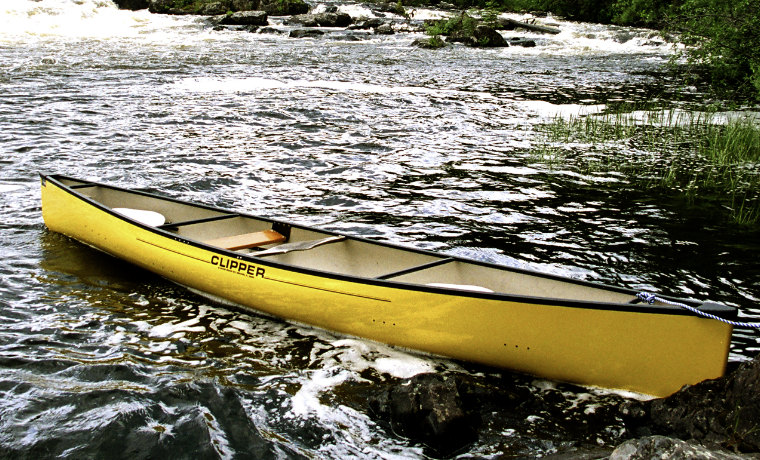
A few basics of canoeing for beginners
Now that you’ve got the equipment settled, let’s go over a few very important canoeing tips for beginners.
How to get into a canoe
Before you get in, you must first determine which end is the front (bow) and which is the back (stern). You can tell by the proximity of the seat to the end it’s on. If there is a small gap between the seat and the end of the boat, that is the back of the boat or stern. The seat with the larger gap is the front or bow.
Getting in and out of a canoe can feel a little unstable at first. When you step in, try to step directly into the center of the boat. Keep your center of gravity low and your weight balanced to make it easier. Use the gunwales for support. Be careful not to put too much weight on them or you could cause the side of the canoe to dip and fill with water. Sit in the center of the seat so your weight is distributed evenly.
How to sit in a canoe
If you’re tandem canoeing, typically the paddler with more experience sits in the stern seat to steer. If you’re canoeing solo, you’ll want to sit closer to the middle of the boat so your weight is more evenly distributed. In a solo canoe that is easy because the seat is usually positioned towards the center of the boat. If you’re paddling a tandem canoe solo, sit backwards in the bow seat to move your weight slightly more towards the middle. If you sit too close to the stern, the bow will become like a sail making it more difficult to steer with wind.
How to load a canoe
Weight distribution is a key factor in canoeing and your goal should always be to make a canoe as balanced as possible. When loading gear and coolers, always make sure they’re placed in the center of the boat so it is not leaning towards either side. Place heavier objects near the lighter passenger to help balance the weight.
How to paddle a canoe solo: canoe paddle strokes
Paddling forwards
Paddling forwards in a solo canoe is simple.
- Dip the blade forward in the water.
- Pull it towards the back of the boat, keeping the blade almost perpendicular to the canoe.
- Switch sides every few strokes to avoid turning the canoe.
Paddling forwards: the J-stroke
Alternatively, you can continuously paddle on one side for longer by utilizing a J-stroke.
- Dip the blade forward in the water.
- As you pull it back, twist your hand so your knuckles are punching slightly downward to create a slight hook at the end of the stroke, like the bottom of a J.
A slight J-stroke can compensate for the boat turning when paddling solo.
Overusing the J-stroke. J-stroking slows down your momentum. It is best used for small corrections.
Paddling backwards
To backup a canoe, like you would a car, simply use the same method as paddling forward but in reverse.
- Dip the blade in the water behind you.
- Push forward.
Stopping a canoe
Here’s how to slow the momentum of a canoe or stop the boat
- Place the paddle in the water close to the boat.
- Push forward or allow it to drag.
Turning a canoe
You can turn a canoe by paddling continuously on the same side in the same direction. Use a sweep stroke to turn a canoe faster.
- Dip the blade in the water towards 2 o’clock or 10 o’clock depending on the side you are paddling on.
- In a wide sweeping arc, scoop the blade towards the back of the boat.
Another method for turning a canoe is the J-stroke mentioned above, though you should avoid overusing this method.
Moving sideways
Use a draw stroke to move sideways without turning the boat.
- Place the blade in the water straight out to the side and parallel to the canoe.
- Pull the blade in straight towards the boat in a line that’s perpendicular.
Leaning into a draw stroke. Remain upright and avoid leaning your torso towards the side you’re drawing in towards.
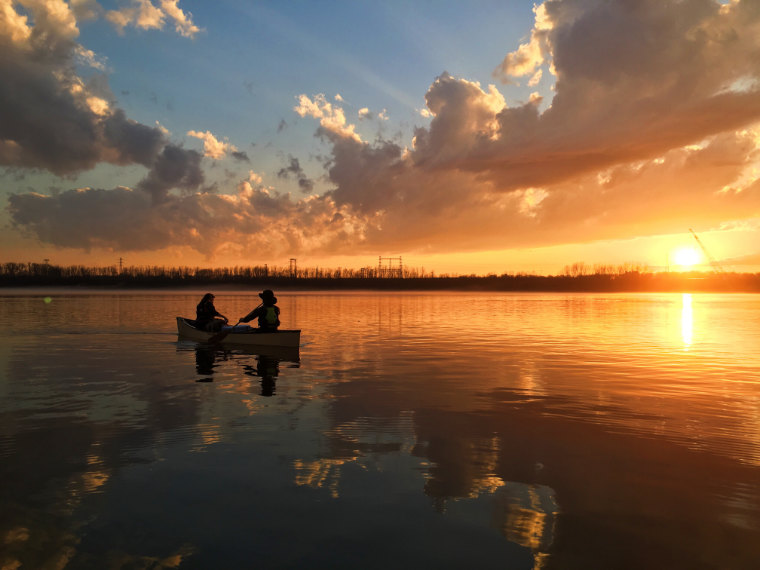
How to paddle a canoe in tandem: canoe paddle strokes
Most beginner canoeists will be paddling in tandem with another person. This is not only safer as a learner but it’s also more fun!It is also easier to control a canoe with the help of a second paddler. All of the strokes are the same as for solo paddlers, but a second person means one paddler (in the stern) can focus on steering, while the other paddler in the bow can provide momentum with forward and backward strokes. Once you learn how to paddle a canoe tandem, it’s much easier to transition to canoeing solo.
Paddling forwards
- Paddler in the bow paddles forward on one side.
- Paddler in the stern either paddles forward on the opposite side
- Paddling out of sync. The more in sync you and your partner are, the more efficient the canoe will move through the water. Avoid stroking at opposite times. Instead, try having the stern paddler count out strokes as you get started to practice syncing up.
- Accidental turning. Because of the way canoes are shaped, the rear paddler can often begin to slightly turn the canoe as they paddle. A stern paddler can compensate for the slight turn by utilizing a J-stroke.
Paddling backwards
- The paddler in the bow pushes the water forward on one side.
- The paddler in the stern pushes the water backward on the other side.
Stopping a canoe
- Both paddlers place the blades in the water on opposite sides.
- Using their torsos to lever the paddle, push the water forward to slow momentum.
Turning a canoe
There are a few ways to change directions while tandem canoeing. The easiest way to turn is for both paddlers to paddle in the same direction on the same side continuously. However, the fastest way to turn is with opposite strokes:
- The paddler in the front paddles with a backwards stroke on one side.
- The paddler in the back paddles with a forward stroke on the opposite side.
Paddling in opposite directions on the same side. This happens often with new paddlers and results in little or no momentum in any direction.
Moving sideways
Both paddlers can use a draw stroke on the same side to move sideways.
- Both paddlers place their blades in the water straight out to the side and parallel to the canoe.
- Pull the blade in straight towards the boat in a line that’s perpendicular at the same time.
Capsize prevention
Although canoes are very stable, all canoes can tip. It is important to take the necessary safety precautions before that happens and make sure you’re comfortable swimming should the need arise.
To avoid capsizing, you can do two things. First, start off kneeling so you can get a sense of how the canoe feels. Kneeling offers more stability, especially in moving water, by keeping your center of gravity low. Also, keep your torso loose. That way, if the canoe tips to one side, you continue facing upright instead of leaning towards the side that’s tipping. If you lean into the side that is down, you will the canoe.
Capsize recovery
Canoe flips happen, even to the strongest paddlers. To right a capsized canoe that is floating upside down you will need to be a strong swimmer. This process is easier with a partner but it can be done alone.
- Swim under the canoe.
- Break the seal of the water by lifting one side of the canoe.
- Push hard and turn over the canoe.
- Remove any remaining water with a bailer.
If you’re unable to right the boat while floating. Use one of the ropes attached to the end to swim the boat to shore.
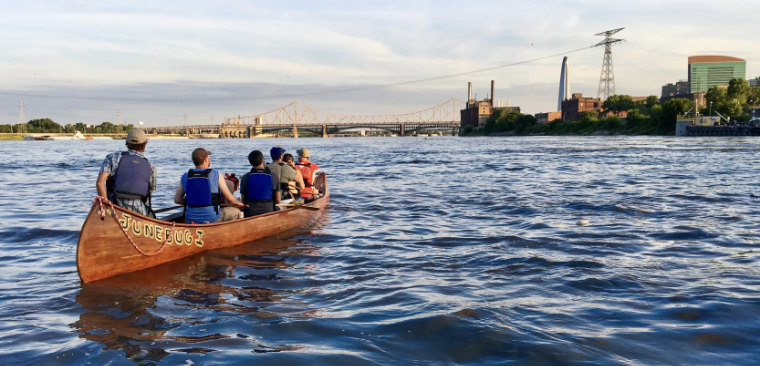
Not quite ready to canoe alone yet?
Try getting started by booking a trip with a local outfitter! They’ll take the guesswork out of getting started. Plus, after your first experience with a trained river guide at the back of the boat, chances are you’ll feel more comfortable getting started canoeing on your own!




